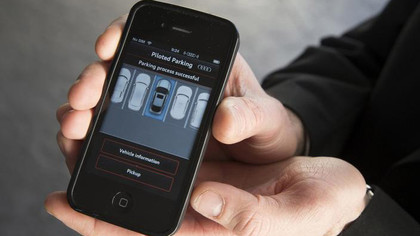Self-driving cars: the future of transport explained
When where and how will autonomous cars work?
Everyone's at it. Nissan has an 'autonomous emergency steering system' that kicks in where braking alone isn't the answer, avoiding low-speed collisions with other cars and pedestrians, and high-speed crashes into the tail-end of a traffic jam.
The system uses a front-mounted radar and camera, two left and right rear radars and five laser scanners spread out across the vehicle. By 'looking' ahead, behind and to the sides, the system can predict collisions and constantly calculates in exactly which direction the vehicle needs to be driven. If the driver doesn't react quickly enough to this information on the dashboard, the car takes over.
Piloted driving

Meanwhile, Audi used January's Consumer Electronics Show (CES 2013) in Las Vegas to demo its own version of piloted driving. Its prototype is able to take over the controls in road traffic, though only if requested to do so by the driver.
"The driver will always be able to decide himself when he wants assistance," said Audi CEO Rupert Stadler, who thinks that piloted driving will be feasible before 2020.
Platooning
Further in the distance is platooning. Perhaps the ultimate expression of the driverless car will be Safe Road Trains for the Environment (SARTRE), a European Commission-funded project involving Volvo that's developing intelligent transportation systems using semi-autonomous vehicles, primarily to save fuel.
A support system that automatically follows the car in front in slow-moving queues, SARTRE could be used on motorways, too. In its tests the project created a platoon of four vehicles led by a truck, all travelling at speeds of up to 90km per hour (55mph), spaced no more than four metres (13ft) apart.

"The road train is the best of two worlds. You can enjoy all the multitasking possibilities of public transportation behind the wheel of your own car," says Erik Coelingh, technical specialist at Volvo, which is also working on the self-parking car that can be abandoned at the entrance to a car park.
Sign up for breaking news, reviews, opinion, top tech deals, and more.
SARTRE has its end-game in platooning, a 'smart city' dream that's still decades away. In effect, the car that drives fastest away from a set of traffic lights will briefly dictate - in effect, control - the acceleration and braking of the cars behind it. By keeping cars in platoons the distance between them can be reduced, making way for more cars on the road, and maximising traffic flow.
To achieve this won't just take driverless cars; they'd have to be constantly exchanging data on their exact position and speed not just with each other, but with traffic lights and real-time, city-wide navigation systems. As well as having your speed controlled, you might be sent home a different way if that keeps traffic flowing.
The ultimate mobile computer

Eventually the car will become an important part of the Internet of Things and thus become the ultimate mobile computer. Networking the driver to the car, to the internet and then to the traffic infrastructure seems logical since GPS navigation and online traffic updates are already available in some 'connected' vehicles.
"Being in a car that drives by itself while the driver reads a book is still quite a revolutionary thought for many people," says Marcus Rothoff, Volvo's product attribute manager for driver assistance, who thinks that boosting customer confidence in self-driving cars is crucial. "Hardly anyone thinks twice about being in an airplane that flies on autopilot."
If the trend towards in-car infotainment continues, we'll all be too busy checking Facebook and oggling Google Earth to want to drive, anyhow.

Jamie is a freelance tech, travel and space journalist based in the UK. He’s been writing regularly for Techradar since it was launched in 2008 and also writes regularly for Forbes, The Telegraph, the South China Morning Post, Sky & Telescope and the Sky At Night magazine as well as other Future titles T3, Digital Camera World, All About Space and Space.com. He also edits two of his own websites, TravGear.com and WhenIsTheNextEclipse.com that reflect his obsession with travel gear and solar eclipse travel. He is the author of A Stargazing Program For Beginners (Springer, 2015),